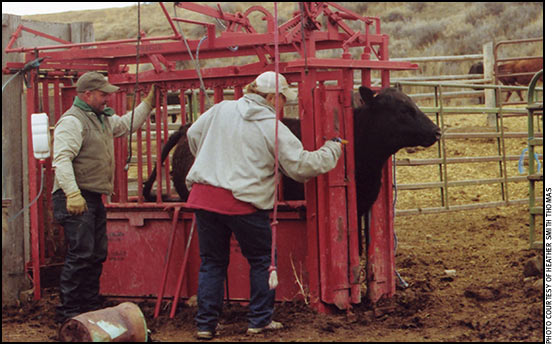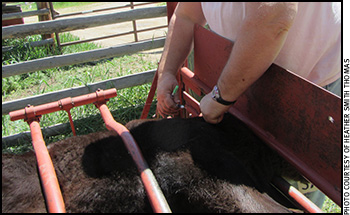
Chris Chase, professor in the Department of Veterinary and Biomedical Sciences at South Dakota State University, says the key factor in heifer development is to get started with vaccinations at a young age.
Give Heifers a Good Start for Disease Immunity
Vaccinating heifers before their first breeding season prepares them for a long life in the herd.
It is important to start building good immunity in replacement heifers before they enter the cow herd and to time their vaccinations appropriately throughout their adult life — to keep their immunity strong.
Chris Chase, professor in the Department of Veterinary and Biomedical Sciences at South Dakota State University, says the key factor in heifer development is to get started with vaccinations at a young age.
“The big problem I see with heifers is when people buy them and don’t know their vaccination history. It is important to get a couple doses of vaccine into them before they are bred,” he says.

The three diseases to be the most concerned about and which we can do the most good in terms of vaccination are infectious bovine rhinotracheitis (IBR), bovine viral diarrhea (BVD) and leptospirosis, says Chase.
The three diseases to be the most concerned about and which we can do the most good in terms of vaccination are infectious bovine rhinotracheitis (IBR), bovine viral diarrhea (BVD) and leptospirosis, says Chase.
There are some other reproductive diseases like neospora that are not as much of a problem in beef cows as in dairy cows, and there is not a very good vaccine for that one. Trich is a big issue in terms of reproductive diseases, but it’s not an easy disease to vaccinate against. The nature of the protozoa doesn’t make it a good candidate for a good vaccine.
Most cattle producers vaccinate against leptospirosis, and there are several important strains. “Leptospira borgpetersenii serovar hardjo type hardjo-bovis (HBP), if present, can be more of an issue in a dairy herd than a beef herd. Dairy heifers are often vaccinated very young for the HBP strain since cows act as a reservoir for it. The important strains we generally think of in beef cattle (Leptospira hardjo, Leptospira pomona, Leptospira canicola, Leptospira icterohaemorrhagiae, Leptospira grippotyphosa) are the strains we find in wildlife and, thus, in the environment,” he says.
When looking at establishing immunity via vaccination, by the time a beef heifer is 6-10 months old, it is important to get a couple doses of modified live virus (MLV) vaccine into her, counsels Chase.
“If a person wants to use killed vaccine, this is an acceptable option, but when it comes to BVD and persistence (to avoid persistently affected calves), it’s pretty clear that we need to get a couple doses of BVD MLV vaccine into these heifers early on,” says Chase.
Many producers give MLV IBR-BVD vaccine to their calves at branding time.
“My personal opinion is that vaccinating at this age is generally to prevent respiratory disease. After those calves are weaned, we need to get a couple doses of MLV vaccine into them then. This can be done at weaning age and then again before their first breeding season,” he says.
If you are giving something to younger calves at branding time, work has been done at Oklahoma State University to show that this first dose starts the immune process and the second dose a couple weeks after weaning acts as a booster.
“This can be as effective as giving it to the calves three weeks before weaning and then a booster a couple weeks after weaning,” he says, “but I like to get a couple doses into them after they have been weaned, to be safe. We can include lepto with those vaccinations, either as a combination or given separately. If you are vaccinating heifers that are not going to be replacements in the herd, you don’t have to worry about lepto.”

Editor’s Note: Heather Smith Thomas is a freelance writer and cattlewoman from Salmon, Idaho.






